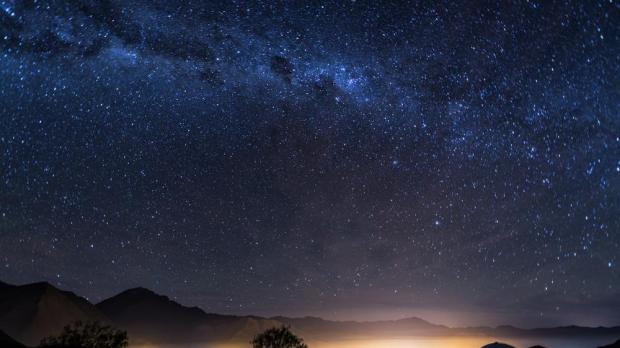After a full day of chores, errands, traffic, and time on our screens, all we usually want is to go to bed and close our blackout curtains at the end of the day. The simple pleasure of looking up at the sky has no place in our schedule.
The fact that looking at the sky has become so rare is the reason behind one of the growing trends in tourism: stargazing tourism — or “astrotourism” as it’s known. The dark skies have become increasingly attractive for travelers all around the world who chase the exceptional natural phenomena like super moons, meteor showers, or eclipses just to witness them. In 2017 alone about seven million people traveled across the USA to see the total solar eclipse.
These unique events are not the only thing stargazers are looking for. According to the Light Pollution Science and Technology Institute, 80 percent of Earth’s land mass suffers from light pollution, so finding those places where skies are fully dark and stars shine the most has become a rare treasure.
Looking at the sky might seem like a new trend today, but it has actually been part of who we are for ages. In an interview for Lonely Planet, J. Thomas Beckett, board chair of Utah’s Clark Planetarium, mentioned that “astrotourists are reconnecting with something that has a deep primitive meaning to humans.”
It’s not only a feeling. Stargazing is an opportunity to reflect on ourselves, to think about the greatness that exists out there, to wonder about our place in the world, and to reconnect with the Creator. The silence of a stunningly lit night sky can do this. As Mother Teresa put it: “We need to find God, and he cannot be found in noise and restlessness. God is the friend of silence. See how nature — trees, flowers, grass — grows in silence; see the stars, the moon and the sun, how they move in silence … We need silence to be able to touch souls.”
Stargazing can also put is in a state of awe, triggering a wave of positive emotions such as compassion, gratitude, and selflessness. According to a study by the American Psychological Association, looking up at the night sky induces a feeling of amazement and triggers awe. This research explains that awe serves a vital social function, because it diminishes the emphasis on the individual self, and may encourage people to forego strict self-interest to improve the welfare of others and the wider world.
Where can you find the darkest skies for your next vacation?
According to the International Dark-Sky Association, there are over 100 certified International Dark Sky Places as of mid-2018. Here are some of them:
- Mont-Mégantic International Dark Sky Reserve, Canada
- Mayo International Dark Sky Park, Ireland
- Brecon Beacons National Park, an International Dark Sky Reserve, Wales
- Pic du Midi International Dark Sky Reserve, France
- NamibRand Nature Reserve, Namibia
- Aoraki Mackenzie International Dark Sky Reserve, New Zealand
- Blue Ridge Observatory and Star Park, North Carolina
- Death Valley National Park, California
- Big Bend National Park, Texas
- Cherry Springs State Park, Pennsylvania

Read more:
Why nature should be your children’s playground

